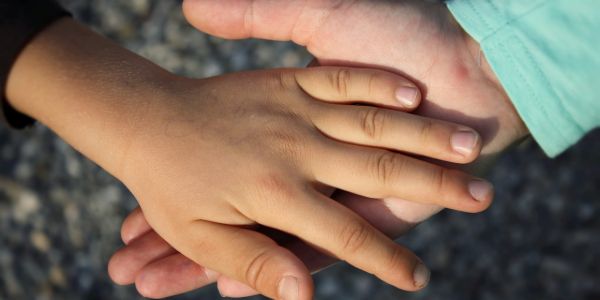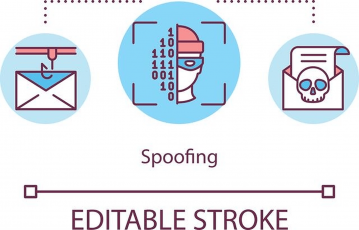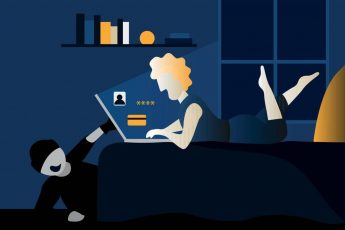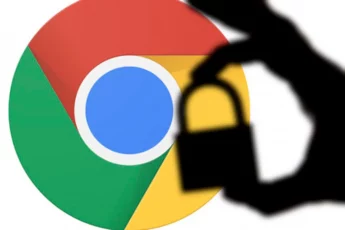There is no doubt that the virtual world of the internet is a remarkable space to explore, whether for random surfing, socializing, or gaining insightful information. But it also threatens online users’ safety, making it explicitly challenging for parents to keep their kids safe online.
So, as a responsible parent, some thoughts may consistently loom around your head, like “how do I protect my child on the Internet?” and “how do I keep my child safe online?” Knowing that the World Wide Web is unknown to you but is a massive part of your child’s daily routine can be nerve-racking, considering the threats. Don’t worry; you’ll find the answers to all your queries in this detailed guide.
What is e-safety?
E-security is the act of attempting to be safe on the internet. A user maximizes his knowledge of the threats presented to their security by breaching private information by cybercriminals.
We know it is a significant issue when there is a designated day that specifically celebrates online safety. It is celebrated each year in February as “safety Internet Day” to raise awareness and educate parents, tweens, and teens alike regarding the threat that your teen and kids are exposed to daily while exploring the World Wide Web.
Teens and tweens are highly prone to the possibility of becoming victims. With the internet being only a few clicks away from their reach and accounts on social media platforms where they feel the need to update their life consistently, it is no difficult task to place your teen’s online safety at risk. That is why online security is important.
Our purpose is to educate you on the risks, and the steps you can take to ensure your teen’s online safety is under control. We understand the advantages web portals can provide to your child should you know how to navigate your way through it safely. You can take some vital steps, from self-monitoring to using trusted software. Let us enlighten you on this journey.
What do you mean by web security?
The principle of defending a website or web application by identifying, avoiding, and reacting to a cyber-threat is mainly a function of internet safety, otherwise known as cyber-security. A threat to your protection does not end at the hands of your negligence.

Unfortunately, often times websites and web applications are also prone to cyber threats, which challenge their integrity in ensuring your personal information does not get leaked to the Internet. This means your kid’s web security is at risk.
For this purpose, exactly we have web security – being a branch of information security. It is a system composed of protective measures and protocols capable of preventing unlicensed personnel hacking or entering websites or web applications.
There are enumerate factors that play a role in web security and protection, which has to be met with at all times. The Open Platform Application Protection Initiative (OWASP) promotes and outlines these requirements.
The majority of top cyber-security web developers will comply with OWASP standards and keep an eye on the Web Hacking Incident Database. All to track hackers and gain information on how hacking of different services on the Internet takes place. These steps allow them to be able to tackle any issues they face themselves.
Website security has a significant role to play in keeping you safe from websites that pose a threat to:
Personal data
Data fraud is an increasing occurrence of data theft, such as email addresses and payment records, which also entails cyber-attackers seeking visitor or consumer details stored on a website.
Phishing schemes
Phishing is an extorting attempt. By disguising oneself as a trusted entity in electronic communications, to get information or sensitive information, such as user names, passwords, and credit card details, phishers often present in your teen’s inbox.
SEO spams
Search engine spam is an effort to control search engine results by manipulating traffic drawn to a scheme intended to try fraud.
Session hijacking
The hijacking of a session is an attack in which an attacker takes over a user session, which often forces them to take unwanted actions on a site.
What is digital privacy?
Digital privacy is an amalgamation of three subcategories; information privacy, communication privacy, and individual privacy. We are told that our data are exposed and that our privacy is at risk at all times.

We disclose our data through digital media, such as social media sites. This has brought the term “digital privacy” to the forefront significantly after recent cyber-attacks have compromised numerous accounts, leading many to worry about the risk of being a victim of identity theft.
That is why it has now become more important than ever to ensure digital privacy for teens. Just as each year in February, “safety Internet Day” is celebrated to raise awareness regarding the importance of digital safety.
January 28th is marked as “Data protection day” to raise awareness and educate individuals on the significance of safeguarding personal information in an age where identity theft is a growing concern.
Privacy means that not only would other people not have unauthorized access to your information, but you can also regulate what data is transparent and what is confidential. Since your user data gets stored in a way that is connected to your personal information, if the hacker has access to it, you are at risk.
Despite constant effort to educate the public on the importance of digital privacy, a survey conducted in 2015 by Microsoft revealed that it is still unknown to many users by what ways they are giving away their data willingly leaving behind a digital trail.
Information privacy
Information privacy is the relation between the collection and usage of data. Under the context of digital privacy, the privacy of information means that users have the liberty to decide how their digital data, especially related to personal data, is collected and used. The privacy principle is to use personal information while protecting it from landing into the wrong hands.
Communication privacy
Communication privacy is of the policy that individuals should rest with the right to communicate digitally with the confidence that their correspondence is conferential. However, it is worth noting that all forms of digital communication have a third party present at all times, known as five eyes, nine eyes & 14 eyes.
Individual privacy
Individual privacy refers to the freedom of exploration a user has on the Internet; this enables the individual to navigate cyberspace freely, meaning you are in control of what you are exposed to and what is shown to you.
Your privacy comes at risk when you receive unwanted pop-up ads, unknown computer viruses, & spam emails.
What online threats do you need to look out for?

They say knowing your enemy is half the battle.
If the Internet were an Iceberg of exciting opportunities, what it has to offer would be just the tip; all the lies beneath the water is what we need to be aware of. Awareness creates fewer future opportunities of falling victim to what lies on the dark side of the Web.
Threats on the Internet exist like water flowing out from a fire hose. But rest at ease, we are here to educate you on the types of dangers that can potentially threaten your teen’s online safety.
Threats to information security
Information refers to procedures and methodologies developed and applied to safeguard all forms of sensitive data from unauthorized personnel by encrypting them.
It is a branch of information risk management whose function is to reduce or prevent the attack on extracting the user’s personal information.

If you’re wondering what classifies as personal information, it can be anything from your bank details to your password, which may pose a concern if leaked. Some noticeable threats to your information security include;
Malware
Malware is software that has been crafted purposely to inflict harm to any device on which it gets downloaded. A wide variety of malware are known; the ones you might have heard about would be Spyware, Trojan, Adware, and computer viruses.
Many sources can make you fall prey to a malware infection. As the name malware suggests, it is malicious software. Its purpose is to make money off you illicitly by stealing, deleted, and encoding your data. Although malware poses no risk to your computer’s hardware, it can overtake core computer functions and track your computer activity.
Phishing
Phishing is a malicious effort to acquire information or confidential data, such as usernames, passwords, and credit card details. It is a way to get the user to provide his information by pretending to be a reliable source of trust.
Phishers are found in your email inbox, or more advanced ones often design websites that are almost identical to their legitimate counterparts, fooling the user into giving their information willingly.
Pharming
Pharming is an attempt aimed at redirecting the traffic of a website to another fraudulent website. Without your knowledge, cybercriminals install malicious code on to your computer or server. Against your knowledge or permission, the code automatically guides you to fake websites.
The aim of pharming is the same as that of phishing to retrieve your sensitive information such as username, password & card details.
Internet scams
You probably have heard about fraud on e-commerce portals such as Amazon and eBay. Or maybe PayPal scams? Teen’s and children are more susceptible to falling victim to cybercriminals’ hands as they are easy targets. Most households have a single PC/Laptop, and your child’s mistake can also lead to your details getting compromised.
Internet scams often include pop-ups, which may seem harmless but are designed to install malware on your device. Your teens are more likely to become a target while trying to download a pirated version of their favorite songs, games, or movies via torrents; this in itself is an illegal act and goes against the copyright law in most countries.
Threats to personal safety
New experiences such as online communication can be shared and made thanks to the advent of the Internet. But there are cons with each pro.

Threats on the Internet are not limited to gaining access to sensitive information for monetary gain. This poses the most significant danger for teens and kids when scrolling around the World Wide Web.
Cyberstalking
Cyberstalking is the act of stalking an individual through electronic means. This often results as a cause of oversharing online. WHOA receives 50-75 cases per week reporting of cyberstalking.
Most teens love consistently updating their peers about their lives; this leads to oversharing of information, leading to your child becoming a stalker victim.
Being stalked is a scary experience that no parent would want their child to go through. At the hands of their stalker, your child may experience being harassed, and this may be partly due to the stalker becoming obsessed with knowing your teen’s whereabouts or feeling a connection with the family life they share.
For a reason, one has to be vigilant about what they share; what may seem harmless may make your teen a target of stalking.
Cyberbullying
The use of technology to stalk, intimidate, insult, or abuse anyone is known as cyber-bullying. Research by Cyber-bullying Research Center found that more than 80% of teens use cell phones regularly, making it the most popular mode of communication and cyber-bullying. Moreover, approximately 10-20% of teens report being cyberbullied regularly.
Cyber-bullying’s most common platforms are online gaming communities, various social media platforms & messaging apps. The biggest concern with cyber-bullying that a parent may have will be that there is no physical evidence of it; you won’t know unless you speak to your child about it. For this reason, it is essential to always have open communication with your kids regarding such matters.
Sextortion / Sexting
Sextortion includes using online shared material to extort a victim; it refers to the specific category of sexual harassment that implies coercive abuse to take advantage of the vulnerable person. Hence, educating your teens about the dangers of sharing intimate photography on the Internet is crucial.
You will need to educate your child that everything on the Internet is permanent, and once you share something, there is no guarantee that it will be shared amongst others.
It is always better to remain cautious than be blackmailed into performing acts that you do not want your child to perform because of such mistakes. In 2017 alone, an alarming 1304 cases of sextortion have been reported to the NCA.
Online predators
Online predation involves an underage child being coerced into engaging in unwanted sexual activities on the Internet. Children who meet and interact online with strangers are prime targets for predators on the Internet.
Perhaps that is the terrifying possibility; what makes it worse is that the kids sometimes agree to meet their alleged offender in real life.
Research reveals that every 1 in 4 girls and 1 in 6 boys will fall victim to sexual abuse before adulthood. As a parent, you are obligated to track your child’s online activities and keep track of friends they make on the Internet.
Obscene/offensive content
50% of 11- to 13-year-olds have reported being accidentally exposed to specific forms of pornography. Various websites contain content that some find offensive, disturbing, or explicit, perhaps not to the user’s taste.
Specific pop-up ads are now of this kind too. When your child watches this sort of content, their brains respond to pornography in the same manner as an alcoholic would react to seeing a liquor ad.
How do I protect my child on the internet and maintain the teen’s online safety?
50% of 11- to 13-year-olds have reported being accidentally exposed to specific forms of pornography. Various websites contain content that some find offensive, disturbing, or explicit, perhaps not to the user’s taste.

Specific pop-up ads are now of this kind too. When your child watches this sort of content, their brains respond to pornography in the same manner as an alcoholic would react to seeing a liquor ad.
Now a few questions along the lines of “how do I protect my child on the Internet?” and “Is there a way to maintain my teen’s online safety” might arise in your mind. Or you probably are wondering how to explain internet safety to a child.
Whether it is to keep kids safe or maintain your teen’s online safety, many steps can be taken.
The most basic rule of thumb to navigating the internet is to do so responsibly.
It would help if you educated your children that there are consequences to every action, and some results may be terrible. Learning begins at home, and the younger the age, the better.
Communication is vital; it should be your first line of defense against threats on the internet. Encouraging your child to speak their mind openly without hesitation will allow them to open up when needed.
Secondly, let your child know oversharing is unnecessary and can have an adverse outcome; it is not your intention to scare them but rather educate them.
Use simple analogies and set basic ground rules that need to be followed at all times; their online friends don’t need to know what school they go to or which part of town they live. It would be best if you implemented these rules to keep kids safe.
Thirdly, there is a fine line between invasion of privacy and keeping an eye on your kids; you must not cross those boundaries, which may create unwanted tension between you and your child. Set a screen time on your kid’s device; using features such as parent control might favor you.
Parent controls are software and features that allow you to monitor and restrict the content shown to your child. If there are certain things you want to keep away from your child, this feature is the best option for you.
How does parent control work, you may ask? Every device has this feature today; you have to create an exclusion list to allow a specific website to be accessed. Any website not on the list is automatically blocked from being accessed.
Lastly, is the screen time restriction. It is reported that children and adolescents aged 8-18 spend 7 hours per day on computers. It is no doubt that drastically reducing their screen time will allow for fewer encounters in which they might fall prey to threats online.
There are apps specifically made to restrict screen time on specific devices, which automatically shut down the phone/tablet once the time is up. Another way is to monitor their activity manually to reduce their screen time by confiscating the device once the time is over.
Conclusion
It is better to be safe than sorry. Hence precaution and awareness are your best friend when education your child before you let them explore the wonder that is the internet.
Our intention is not to scare you away from what lies on the web as the internet can be a place of finding solace, educating oneself, spending time, and connecting with loved ones, and hey, you’re reading this thanks to the Internet.
Remember, everything has pros and cons, but this should never stop you from exploring safely. Precaution is vital to keep kids safe online, and safety is essential. Happy surfing.
Images via Pixabay.






